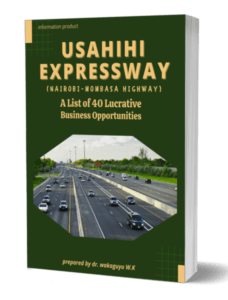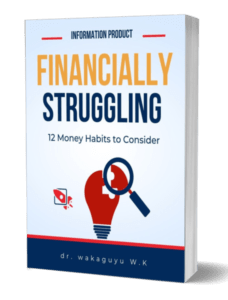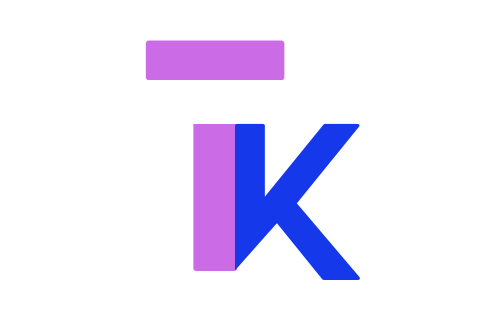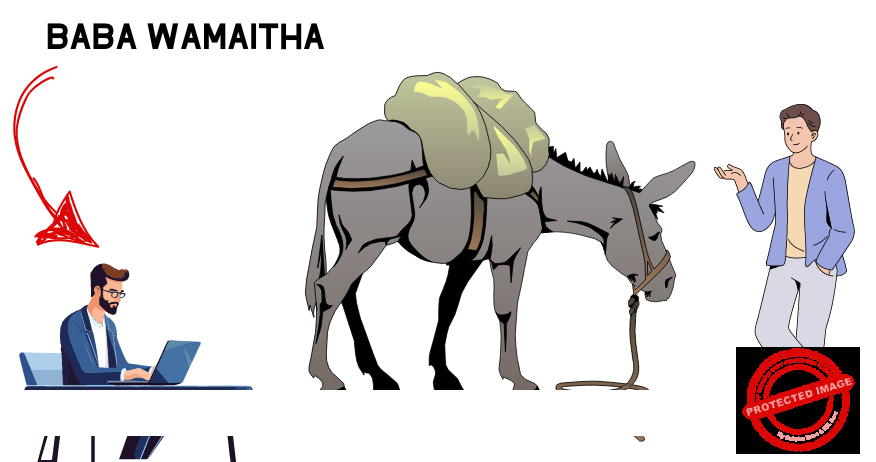Whatever engagements the International Monetary Fund (IMF) has with Kenya, those are business transactions at zero per cent interest but with higher costs. Why? Though the interest rate for the loans is zero (0%) percent or lower, there are other costs for the loan. Besides, the country has to bear the exchange rate costs and stringent IMF conditionalities.
Many times, IMF’s conditionalities are worse than paying interest, including commercial interest rates.
Affiliate Disclosure: This post may contain affiliate links – I may receive a small commission if you purchase through links, at no extra cost to you. Read HERE.
Now, a small bird tells me that since Kenya is behaving like a small naughty girl or boy, the IMF is likely to delay approval for fresh funding until we toe the queue, not jump. The mandarins at the fund are effectively saying can’t give, won’t give, “mtando“!
I hear many saying, but it is just a loan. Why now? Note … these loans are not just loans. They are not like those loans your grandmother got from small banks where she was treated with respect like the Queen she was in the early 2000s.
Many borrowers were treated awfully (like it is happening today) by some major banks who thought they were despicable, the wretched of mother earth, too poor to grace their banking halls.
When the banks woke up from their long slumber, they realized that business is not a catwalk and the dustier the tractor, the better it is at ploughing the farm. Kenyans may have been walking bare feet to the banks, but their torn “kabuti’s” had money, real money, not pocket change.
Baba Wamaitha and IMF Loans
The IMF loans have conditions. This reminds me of many days ago when I was talling (growing up) in the village. There was this Baba Wamaitha, the village loan shark or, more politely, the village Shylock. That is cool, isn’t it?
Baba Wamaitha loaned our parents’ money, and the loans had conditions, tough conditions. IMF conditions are nothing. He had a sneaky way of telling when the family had money – the noise the children made when playing in the fields or their extended stomachs like that of landlord Patel.
Never mind, it could have been because of not deworming on time or drinking too much millet porridge. To him, children’s happiness and stomach sizes were a strong indication of when to demand his money.
Baba Wamaitha always came to visit the homestead to demand his money early in the morning before the chickens stopped stretching their beaks. Talk of spring one day and embarrassing parents in front of their children. Many times, he left empty-handed. With time, he learnt that the villagers did not love him because he was Baba Wamaitha. They loved his money, his loans.
Someone, tell IMF and other lenders, that we are Kenyans, and we know that a hyena does not smile.
Back in the village, I thought Baba Wamaitha’s loan conditionalities and his modus operation were his modern-day inventions, like today’s ChatGPT. Then I came to town and heard about IMF, World Bank, loans and Structural Adjustments Programs (SAPs) in the 80s and the aftermath in the 90s. I lost my job and realized that Baba Wamaitha was a village amateur.
When We Paid IMF Loans
Later, we got multi-party, and the economy improved. We clapped our hands thinking the political parties we had the better the economy. I remember late President Moi’s words – “Siasa mbaya, Maisha mbaya”. Anyway, an old man seated will see further than a boy on a tree – how true.
We had Kibaki, a president who showed us how to run an economy, how businesses operate and, more importantly, how to stick to one’s lane. Introverts are not always smoking “marijuana” or drinking “muratina” when not in public. They are thinking and innovating – ask the Russians.
Never underestimate the power of working as a child labourer in your father’s tobacco kiosk – you cannot get that experience in any university even from Harvard. He understood “kioski-nomics”, the “kadogo” economy. Of course, he had goodwill from the Kenyan people.
Then came Uhuru Kenyatta with his team of economists (I am not talking about West Gate or Shakahola deaths). The team was led by Dr. Patrick Njoroge (the CBK governor) who understood perfectly IMF and the gang’s mode of operations – he had worked at the fund. The team resisted interfering with the Kenya shillings.
No matter the efforts to devalue the shillings, they said: no way! over our life bodies. We questioned it earlier HERE and we are doing is again – of course you know what has happened after “they” got their way. The country struggled (as expected) until the current …. rode into town.
When I look at the economic environment today, I am tempted to ask whether Baba Wamaitha had left the village at any time in the 60s & 70s and sojourned to the land beyond to visit Baba Obama. But that is not possible. The furthest the man travelled was Nyeri Town. And Ajay Banga is the World Bank President, not the IMF managing director.
Otherwise, had he been in the IMF, I would have sworn he has Singh’s first cousins in Nyeri Town – sons of Wanjiku and Baba Wamaitha is his relative.
Now, with my village thinking – you know I am a villager – IMF has been behaving like Baba Wamaitha only that there was only one person (the man), one wife and several children who had to pay him the loan in the village.
The IMF loans will be paid by 57 million Kenyans (the actual number is over a 60million, but this is Kenya, we do not count the number of children in a family, and old people – it is un-African and against the GenZs motivation). There are many men, many wives and many children.
Who Pays IMF Loans?
When the IMF is displaying reluctance to give Kenya more funding, we get offended. The fund is simply saying that the 57 million Kenyans are uncreditworthy – we can’t pay, we won’t pay. Did Kristalina Georgieva watch the play “Can’t Pay, Won’t Pay” by the Italian Dario Fo in 1974? This action by the IMF can only be a backlash by the lender on behalf of the 57 million Kenya borrowers.
Can the fund stop embarrassing the 57 million Kenyans? We work very hard to pay taxes. Every day we rise before the first cock crow. We are aware that poverty and blankets are great bedfellows. But shall we also add that sleep and debts are strange bedfellows? When we remember our country’s debts, our eyelids rebel – can’t close, won’t close. Be assured IMF and others, we shall pay the money, including the decimals.
The fund should know that we are Kenyans and we will pay our debts to the last coin. The leadership does not pay country debts, including IMF loans, from its pockets. Kenya is not a plantation with an owner and servants. Kenya is a country with a management team, a.k.a., the government and shareholders.
The government uses tax money contributed by the 57 million Kenyans (unborn, alive and dead) to repay the IMF and other loans. IMF shouldn’t be worried. If those alive can’t pay, those unborn will pay. Kenya has many daughters, we can even pay from the dowry. We are Kenyans and we pay our debts.
We the taxpayers must understand what is happening to the loans. In the past, Kenyans could not take part in borrowing decisions, yet they were expected to pay taxes to repay the loans without question. This was an unnatural phenomenon, like a traditional wife in the 21st century.
Even at the home front, we have embraced consultation processes – that is what the GenZs have demanded and we have no alternative but to say yes sir or madam. Governments, including ours, do not have contracts with the citizens to shackle them with economic debts. Governments have contracts with the citizens to get them out of the yolks of poverty.
But alas, the political elites operating as plantation owners have other verses for the economic sermons … and their cheerleaders – international lenders. This is the greatest invention the GenXs have to contend with.
Back in the country, Kenya has been grappling with the problem of massive domestic and international debt repayments. This can only be equated to an overdue pregnancy – no matter the repayments, the debts do not go down.
A bird has it that from the data available, in 2023, over 46% of Kenya’s tax collection was used to service domestic and international debts, leaving little for development considering that over 36% of the revenue was used to pay salaries.
Some of the international institutions that have “generously” loaned Kenya are the IMF, the World Bank (WB), the African Development Bank (ADB), etc. There is also a host of international commercial banks that have given the country money, of course, at varying interest rates.
People in various countries, especially the developing economies, have voiced their criticism of the IMF for its stringent measures and conditions that have left many countries worse off than before they borrowed the IMF loans. Kenyans still remember the Structural Adjustment Program (SAPs), neoliberal economic reforms championed by the two Brenton Woods Institutions – IMF and the World Bank.
The conditionalities in the 1980s left the country on its knees economically literally, worsened political tension, and increased poverty, crime and unemployment. We could go on and on till thy kingdom come.
For almost forty years, the IMF has been doing business with Kenya. But this time the fund has found itself amidst an economic storm which has evolved into a political storm in the country. The IMF has significantly influenced Kenya’s economic landscape, particularly the country’s international debts with the conditionalities. Apart from the conditions, the loans require repayment on time.
Unique IMF Loans Problem
IMF loans present not just a problem but a huge problem not only for Kenya but also for all other recipients. The loans come with conditions that largely aim to ensure repayments. However, the conditions interfere with the very intentions. For example, in the earlier 1990s, one condition was the reduction of the wage bill. This resulted in massive layoffs without adequately preparing the affected people.
Laying the people off and giving them money to start businesses was, to say the least, useless because not every person is a businessperson. Besides, even those who were business-inclined could not set up businesses overnight. In the meantime, the government could not collect PAYE of taxes from the laid-off people’s businesses.
Most of the conditions for IMF borrowers are uniform without considering the region, demography, level and type of education, the political and social climate, level of public awareness time, etc. For example, the conditions that the IMF and World Bank could escape in Kenya and most developing countries in the 80s and 90s will be extremely difficult to implement today.
The generation that watched their parents suffer because of the SAPs is more economically and politically aware today. And they are not prepared to go that way. Their lives were destroyed. They cannot let the lives of their children be destroyed.
Besides, most of the recommendations are not practical but theoretical. Models that can work in the West cannot work in Africa, which is an unfamiliar terrain ripe for innovative ideas that are not bent on enslavement but on the liberation of her people. Economic Freedom for Africa is economic freedom for the entire world.
Questions about IMF Loans
The IMF provides loans money at zero percent interest rates but under certain conditions. The country loan recipients are expected to adhere to the loan conditions to the letter. The implementers of the conditions, especially those working in government more often than not, have either worked with the Fund, received training from the fund or they have a connection somehow to the fund.
Over the years, some conditions have left countries worse off than before the loans. A case in point is Kenya in the 80s and the aftermath that spilled over to the 90s.
These are our questions:
1. What assurance does the fund give to countries about the success of their conditionalities?
2. Since the IMF is involved either directly or indirectly in the implementation of the conditions, what level of responsibility does it take for the country’s deterioration of various parameters such as domestic interest rates, inflation, exchange rates, employment levels, GDP, etc.
3. Are there loan right-offs for the role that IMF plays with the failure of the country’s deterioration of various parameters mentioned in (b)?
4. Today, many loan providers take insurance for any loan they provide depending on the risk profile of the loan recipients. Does the fund take insurance for the loans and if it does not, what are the reasons?
Over the recent years, Kenya has increased its borrowing from the IMF and other institutions internationally and domestically to address various economic challenges, such as budget deficits, economic shocks, and the COVID-19 pandemic in 2020 & 2021 and the after-effects.
There are always questions about how much the country has borrowed over the years. Sometimes, the population feels like the whole story is never availed. But what is this debt to the IMF?
Kenya's IMF Loans Debt
From the data available from the IMF website, IMF lending commitments to Kenya date back to July 7th 1975, which is 49 years of doing business together and Kenya has been making efforts to pay her debts. Kenya’s debt to the IMF has grown significantly over the decades but you will notice that sometimes, the country does not take all the money approved. Yet the IMF demands full implementation of the conditionalities.
Below, we highlight Kenya’s loans to the IMF in the last 8 years:
2016: Received approximately $1.5 billion under a precautionary arrangement. This amount was not fully drawn down.
2018: Kenya had an undrawn standby facility of $1.5 billion.
2020: Received $739 million under the Rapid Credit Facility (RCF) for immediate financial help amid the COVID-19 pandemic.
2021: Secured a 38-month arrangement under the Extended Fund Facility (EFF) and Extended Credit Facility (ECF) amounting to $2.34 billion.
2022: Approximately $410 million was disbursed in April 2022. This was continued disbursements under the EFF/ECF programs.
Source: Internet
But … what is the total Kenya debt to the IMF? The National Treasury should tell us. Full disclosure.
As of mid-2023, Kenya’s total debt to the IMF under the ongoing EFF/ECF arrangements and past loans stood at around $3 billion. Note the words around. This means it is either lower or more, but round off, that is the amount. This amount is inclusive of principal amounts, and it fluctuates with each disbursement, repayment, and new arrangements and the exchange rate.
It would be interesting for the IMF to provide data about all the loans Kenya has taken from 1975 to date – the principal amounts and any extensions, including the exchange rate variances – on disbursement and repayment. Of importance would also be the conditionalities.
What Kenyans Can Do about IMF Loans?
IMF loans are not for an individual but to a country. The responsibility to pay the loans falls on every Keya. Though being a borrower is bad and especially when the lender sometimes behaves like a village, Shylock dictating how you will run your homestead, a lender cannot exist without a borrower. Without countries to borrow, the IMF would not exist.
Kenya has been paying her debts since 1975. The country has completed repaying most of the loans. However, addressing current Kenya’s debt situation is an urgent issue. Kenya taxpayers cannot be working to repay loans with no end. This is a modern-day slavery. In all cases, the IMF has a responsibility when a country defaults on its debt.
The fund imposes the conditions. This is unlike the case of commercial debt providers who do not impose conditionalities but are only interested in the loan interest.
Even a village wife will not work every day to repay loans taken by her husband, even if the loan was used to construct the house she sleeps in or to buy a water tank for the family. She will question the loan amount, interest rate, repayment schedule, and potential consequences if the family cannot make payments in full.
The village wife will get to a point where she will demand to have a meeting with the lender. She will not come cowed, she will tell the lender she and her family are not slaves. You get the gist.
This Kenya-IMF loan debacle requires a multifaceted approach involving both the government and the citizens. Here are strategies the government and the citizens can take before telling the IMF Kenyans are not slaves and it was great when it lasted.
a. Government to start involving the citizens in its borrowing plans. Previously, the government has not been discussing its borrowing plans with the citizens. This has been counterproductive to where the government will now be required to implement fiscal policy measures to manage public expenditure so that it’s able to reduce current budget deficits, debt repayments and salary expenditures.
The government may also need to impose structural reforms that will enhance economic productivity, maintain revenue collection, and improve the business environment. The government can also restructure existing domestic and international debt to secure favourable terms from lenders while avoiding short-term borrowing that has high interest from commercial banks.
b. Though the private sector complements the public sector, it has been a silent observer in the debt issues. The taxes from the private sector are used to pay public debt. In addition, the government borrows from the private sector, where it is a big player. The sector can be encouraged to engage in current and future domestic and international investments in various sectors of the economy to spur growth and create jobs.
There is a need to diversify economic production to reduce reliance on a few sectors. This will help the country increase resilience to economic shocks.
c. The government manages the country on behalf of the citizens. However, there is a need for more in-depth consultation with the citizens, a.k.a public participation, to educate the citizens about revenue collection and public debts, essential for fiscal responsibility and transparency in government borrowing and spending.
d. Kenya does not exist in a vacuum, but in a world with other countries. Therefore, whatever economic challenges the country is undergoing, other countries are also experiencing. What happens in one country has spiral effects. For example, there is a need for bilateral and multilateral aid and debt relief, especially where the lenders are also culpable.
Final Thought on IMF Loans
Though Kenya’s debt situation with the IMF may reflect broader economic challenges that the country faces, we are in the 21st century, where the voice of the borrower is equally important. Without countries to borrow, the IMF would not exist. While the IMF provides crucial financial support, people must not perceive it as behaving like the village Shylocks.
Though Kenya needs to adopt comprehensive strategies to manage and eventually reduce its debt burden, the government is not solely responsible for the debt problem. Debt is like alcohol. The drunk is not 100 percent to blame, the seller is equally to blame – for selling the alcohol. There is a certain percentage of responsibility that the IMF carries.
Through combined efforts from the IMF, the government, and the public and private sector, Kenya can work towards a sustainable economic future of economic freedom, not economic enslavement.
Thank you for reading the article, let us know your thoughts in he comments.
Dr. Wakaguyu







